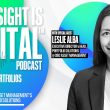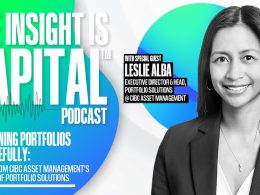by William Smead, CEO, CIO, Smead Capital Management
In his recent 2011 shareholder letter, Warren Buffett explained the purpose behind investing, the “real” definition of risk, and the three types of investments which congregate the marketplace. At Smead Capital Management, we believe Mr. Buffett struck at the core of the problem that most institutional and individual investors are having. They are defining risk primarily by what happens in the next twelve months, while the Oracle of Omaha is thinking in five to ten-year time frames, at a minimum. These short time frames are combined with eyes locked on the rearview mirror, inhibiting investors from participating in wealth creation as we look out into the future.
In Buffett’s mind, “investing is forgoing consumption now in order to have the ability to consume more at a later date.” In essence, that is the purpose of investing. Notice that Buffett never includes any physical or mental limitations on investing. As a former 5’ 8” left-handed pitcher and first baseman, I am very glad there are no physical limitations. You don’t need to be a Valedictorian in high school or among the Phi Beta Kappa’s in college. We believe investing is something that is done for the purpose of increasing purchasing power or wealth in reasonable time frames and in securities which make sense at very average IQ levels.
This leads us to how most of today’s market participants define risk. Short-term price movements or volatility are how most academics and current market participants define risk. Buffett refers to it as beta in the letter, “a Wall Street term encompassing volatility and often used in measuring risk”. Beta is how much the price of your security adjusts as compared to the price adjustments of its index. Recent (three to five-year) history, which includes the huge meltdown/liquidation of 2008, is fresh in everyone’s mind. Therefore, in our opinion, institutional investors have organized their asset allocation around surviving the worst possible 12-month price movements. This has caused high commitments to the bond market, commodity markets and emerging stock markets around the world. We feel individual investors are highly over-committed to the bond market after gorging on bonds for three consecutive years!
Fortunately, Mr. Buffett has been kind enough to breakdown the three categories of investment. Those categories are currency based investments (money market funds, CDs, bonds, etc.), unproductive assets (gold, art, collectibles, etc.) and productive assets (common stocks, farmland and real estate). We at SCM believe he did this because of the popularity of the first two categories. We think the popularity has ruined them for use in five to ten- year time frames.
Buffett is very strict in that he asks for an increase in purchasing power above and beyond inflation. Mathematically, if history is any guide, currency investments have very little chance of increasing purchasing power over the five to ten-year pull. We believe the only chance would be a prolonged period of deflation which a number of doomsayers are happily promoting. Here is Buffett’s take:
“Investments that are denominated in a given currency include money-market funds, bonds, mortgages, bank deposits, and other instruments. Most of these currency-based investments are thought of as ‘safe.’ In truth they are among the most dangerous of assets. Their beta may be zero, but their risk is huge. Over the past century these instruments have destroyed the purchasing power of investors in many countries, even as the holders continued to receive timely payments of interest and principal. This ugly result, moreover, will forever recur. Governments determine the ultimate value of money, and systemic forces will sometimes cause them to gravitate to policies that produce inflation. From time to time such policies spin out of control.
Even in the U.S., where the wish for a stable currency is strong, the dollar has fallen a staggering 86% in value since 1965, when I took over management of Berkshire. It takes no less than $7 today to buy what $1 did at that time. Consequently, a tax-free institution would have needed 4.3% interest annually from bond investments over that period to simply maintain its purchasing power. Its managers would have been kidding themselves if they thought of any portion of that interest as ‘income’.”
Currency investments are for money which has a reason to fail the risk test. The owner agrees to give up purchasing power in the long run to have more stability and certainty in the short run.
The second category of investments is what Buffett calls “unproductive assets”. Here is his description:
“The second major category of investments involves assets that will never produce anything, but that are purchased in the buyer’s hope that someone else – who also knows that the assets will be forever unproductive – will pay more for them in the future. Tulips, of all things, briefly became a favorite of such buyers in the 17th century.
This type of investment requires an expanding pool of buyers, who, in turn, are enticed because they believe the buying pool will expand still further. Owners are not inspired by what the asset itself can produce – it will remain lifeless forever – but rather by the belief that others will desire it even more avidly in the future.”
In his book, “A Short History of Financial Euphoria”, John Kenneth Galbraith explained, “by 1636, a tulip of no previously apparent worth might be exchanged for ‘a new carriage, two grey horses and a complete harness’.”
Buffett chose to focus on the “granddaddy” of all periods of unproductive asset euphoria to shed light on the current mania for gold. Turn on the TV for any extended time period for 24-hour news or business news and you will get bombarded by offers to sell you gold. Our rule at SCM is to sell what the majority of promoters are promoting. Right now that is spelled G-O-L-D! Buffett uses the last two major US bubbles to take a serious punch at gold:
“What motivates most gold purchasers is their belief that the ranks of the fearful will grow. During the past decade that belief has proved correct. Beyond that, the rising price has on its own generated additional buying enthusiasm, attracting purchasers who see the rise as validating an investment thesis. As “bandwagon” investors join any party, they create their own truth – for a while.
Over the past 15 years, both Internet stocks and houses have demonstrated the extraordinary excesses that can be created by combining an initially sensible thesis with well-publicized rising prices. In these bubbles, an army of originally skeptical investors succumbed to the “proof” delivered by the market, and the pool of buyers – for a time – expanded sufficiently to keep the bandwagon rolling. But bubbles blown large enough inevitably pop. And then the old proverb is confirmed once again: ‘What the wise man does in the beginning, the fool does in the end’.”
The third category is productive assets like ownership of a business, farm land and real estate. Meeting an economic need and getting compensated with cash profits or rent. Thanks to the commodity bull market of the last ten years, farmland appears over-priced (see chart below).
Here is a picture that is worth a thousand words:
Source: blog.agnetic.com, October 24, 2011 “Black Swans are Landing on Your Farmland”
These are the categories which historically have increased the purchasing power of folks over long-term stretches. Buffett says it best:
“Our country’s businesses will continue to efficiently deliver goods and services wanted by our citizens. Metaphorically, these commercial “cows” will live for centuries and give ever greater quantities of “milk” to boot. Their value will be determined not by the medium of exchange but rather by their capacity to deliver milk. Proceeds from the sale of the milk will compound for the owners of the cows, just as they did during the 20th century when the Dow increased from 66 to 11,497 (and paid loads of dividends as well). Berkshire’s goal will be to increase its ownership of first-class businesses. Our first choice will be to own them in their entirety – but we will also be owners by way of holding sizable amounts of marketable stocks. I believe that over any extended period of time this category of investing will prove to be the runaway winner among the three we’ve examined. More important, it will be by far the safest.”
Our nation is dominated by retiring baby boomers in the 50-65 year-old age range who need their money to last 20-40 years and institutions in need of increasing purchasing power for perpetual asset bases. Ownership of businesses, especially common stocks, has dropped dramatically since the stock market bubble peaked at the end of 1999. At SCM, we are willing to accept the possibility of loss in the next 12 months to gain significant purchasing power over the next ten years. We would assume a minority of investors are postured that way currently because of the way they define risk.
Best Wishes,
William Smead
The information contained in this missive represents SCM’s opinions, and should not be construed as personalized or individualized investment advice. Past performance is no guarantee of future results. Some of the securities identified and described in this missive are a sample of issuers being currently recommended for suitable clients as of the date of this missive and do not represent all of the securities purchased or recommended for our clients. It should not be assumed that investing in these securities was or will be profitable. A list of all recommendations made by Smead Capital Management with in the past twelve month period is available upon request.
Copyright © Smead Capital Management









